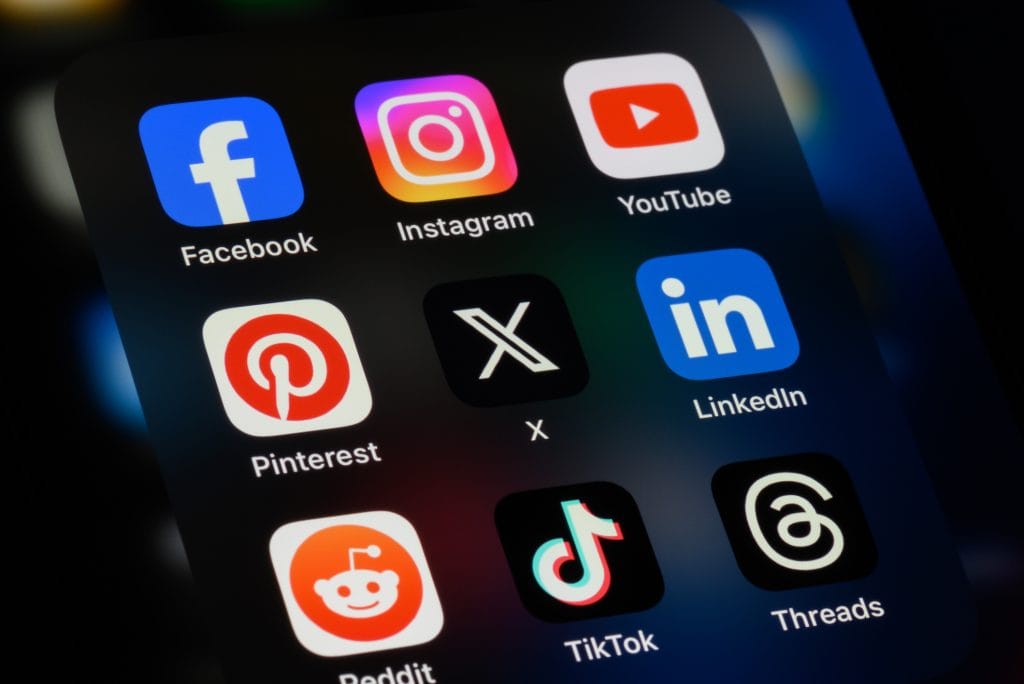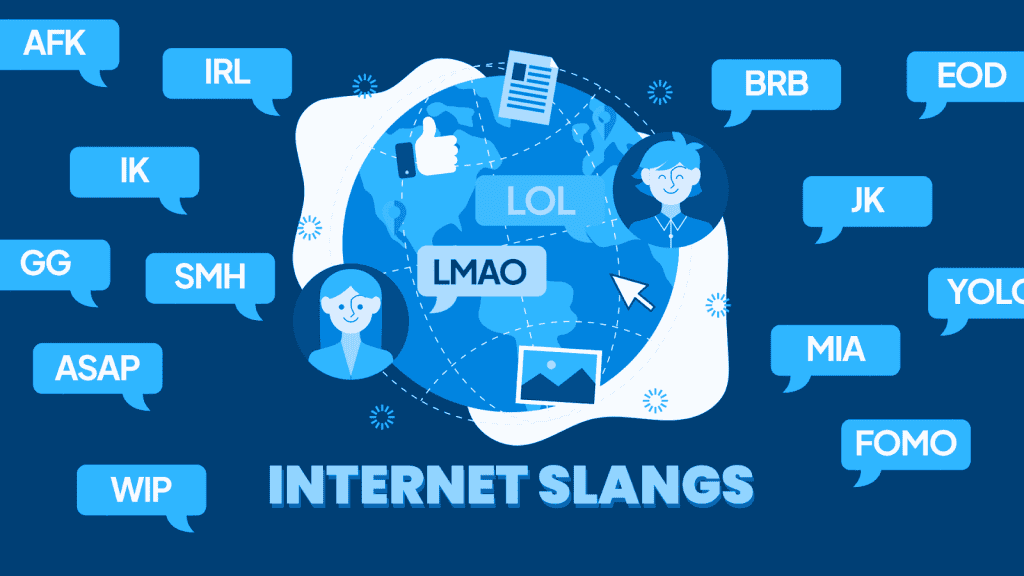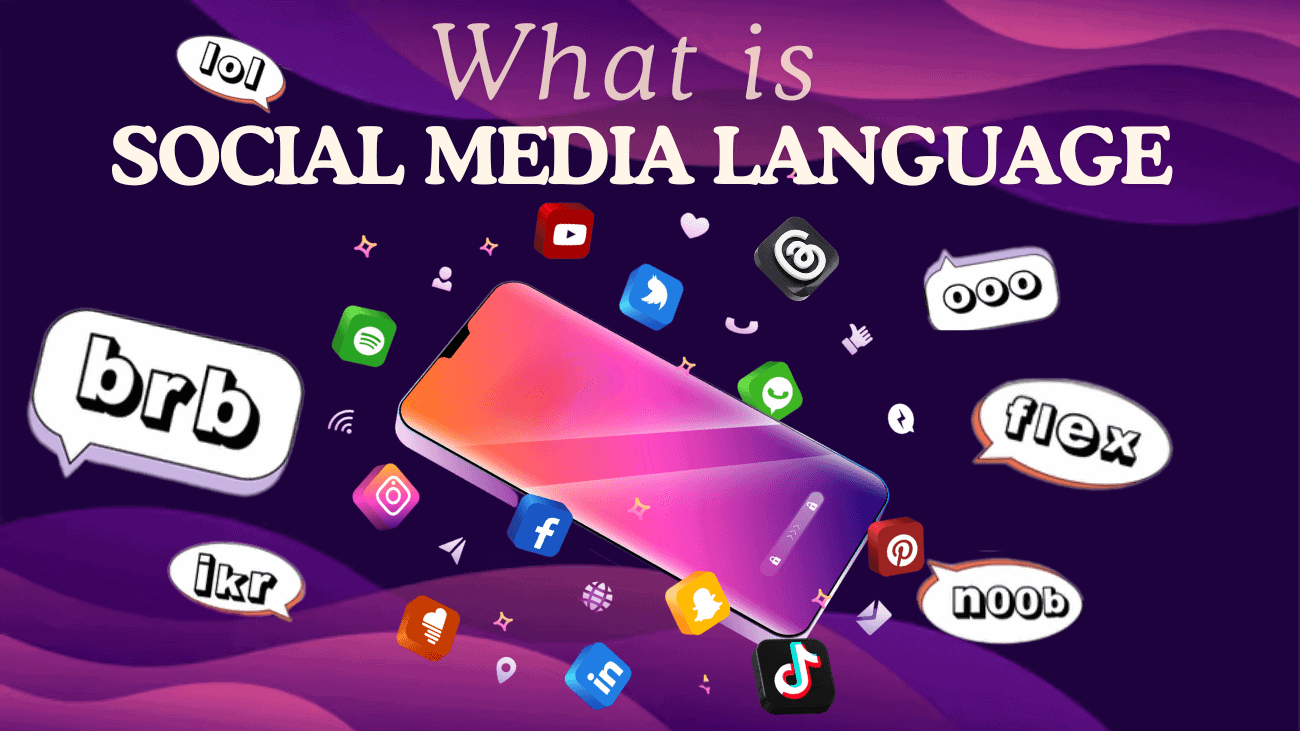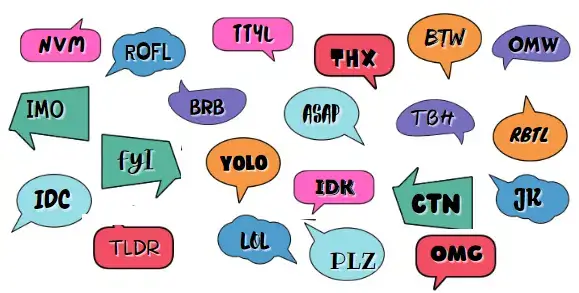Have you ever found yourself scrolling through Instagram and wondering what all those abbreviations and emojis really mean? Welcome to the world of social media language! It’s the unique way we communicate online, filled with catchy hashtags, fun emojis, and clever acronyms that make our interactions more lively and expressive. Whether you’re chatting with friends on Twitter, sharing moments on Facebook, or creating content for TikTok, understanding this language helps you connect better and stay in the loop.
But why does it matter so much? Well, social media language isn’t just about keeping up with trends—it’s shaping how we express ourselves and how brands reach out to us. For marketers and content creators, mastering this language means engaging more effectively with audiences and building stronger connections. For everyday users, it means communicating more naturally and enjoying a richer online experience.
It’s time to explore how these online expressions are changing the way we talk, share, and connect with each other! Let’s start!
What Exactly is Social Media Language?
Social media language is the special way we talk and write on platforms like Instagram, Twitter, and TikTok. It includes unique words, shortcuts, and styles that make our conversations quick and fun. You’ll often see slang, emojis, and shortened words used to express ideas easily and creatively. This language keeps changing as new trends and popular culture influence how we communicate.

Social media language really shows who we are today. It helps us share our thoughts, feelings, and opinions in ways that feel genuine and easy for our friends to understand. Plus, it brings people together through things like hashtags, memes, and inside jokes. This shared way of talking creates a sense of community, connecting people from different places and backgrounds.
As we use social media more in our daily lives, social media language will keep growing and changing. It affects how we talk to each other both online and offline, shaping everything from our everyday chats to bigger cultural trends. Understanding social media language is important because it helps us communicate better and stay connected in our fast-moving digital world.
What Effects Does Social Media Language Have?
On young generation
Social media has changed the way we talk and connect with each other. As platforms like Instagram, Twitter, and TikTok have become more popular, the way we use words and communicate has quickly changed. The influence of social media language on today’s generation is huge and important.
On social media, people use lots of abbreviations, acronyms, and shortened words. This makes the old ways of writing and talking seem old-fashioned. Emojis have also become very common, helping people show their feelings and emotions easily through pictures.
Social media has also introduced new words and slang that didn’t exist before. Young people especially use these new terms a lot, and they have become a big part of how they speak every day. This creates a gap between younger and older generations, as older people might find it hard to keep up with the ever-changing language used on social media.
Overall, social media language has a big effect on how the current generation communicates. New words, shortcuts, and emojis are now a regular part of how we talk and share information. It will be interesting to see how this language continues to grow and change, affecting the way we communicate both online and in our everyday lives.
On shaping cultural norms
Over time, the way we use language on social media has evolved, and it plays an important role in shaping cultural norms. Short forms and acronyms, like “LOL” (laugh out loud) and “OMG” (oh my god), are commonly used and have become part of our everyday conversations. These changes affect how we communicate in both personal and work settings.
Social media has also changed how we show our emotions. Emojis have become a popular way to express feelings, often replacing traditional words. They are not just used in personal chats but are also common in business, where companies use emojis to connect with their customers and make communication more friendly.
The way we see ourselves and others has also been influenced by social media. Many people feel judged by the number of likes or followers they have. This has led some to create a fake or “perfect” image of their lives online. Filters and editing tools are often used, which has set unreal standards for beauty.
In short, the language of social media is a big part of our lives. It shapes how we communicate, express emotions, and see ourselves. It’s important to understand its impact and use it wisely
What Are Social Media Languages You Should Know?
Acronyms
1. AMA
Meaning: Ask me anything
The term AMA became popular on Reddit, a site where people discuss all kinds of topics. If someone says “AMA,” they’re inviting others to ask them anything they’re curious about, with the expectation of an honest reply.
Example: “Ever wondered what it’s like to work in a hospital? AMA!”
2. BTW
Meaning: By the way
Use BTW when you want to add something that’s not directly related to the current topic, like an extra detail or something you forgot to mention earlier.
Example: “I’ll meet you at 5. BTW, I found your book—it was under the couch.”
3. DM
Meaning: Direct message
You’ll see this term on platforms like Instagram or Twitter. Instead of commenting publicly, you can send someone a DM, which is a private message.
Example: “If you’re interested in custom art pieces, DM me for more details!”
4. FF
Meaning: Flashback Friday / Follow Friday
This acronym can mean two things depending on how it’s used. On platforms like Facebook or Instagram, #FF often stands for “Flashback Friday,” when people share old photos or memories.
On Twitter, however, it means “Follow Friday,” where users recommend accounts others should follow.
Example 1: “Throwback to our family trip to the beach in 2005.” #FF
Example 2: “Need a laugh? Follow @hilariousmemes for daily jokes! #FF”
5. FOMO
Meaning: Fear of missing out
FOMO refers to the feeling you get when you’re worried about missing something fun or exciting. It’s such a common experience that it’s become part of everyday language.
Example: “I was going to skip the concert, but my FOMO got the best of me.”
6. FTW
Meaning: For the win
Use FTW when you want to say something is the best or to celebrate a success. Sometimes, people use it in a funny or sarcastic way.
Example: “Finally finished my project on the first try FTW! 🎉”
7. ICYMI
Meaning: In case you missed it
Use ICYMI when you want to highlight something someone might have overlooked. It’s often used when sharing older posts or information again.
Example: “ICYMI, here’s our video from last month’s community event.”
8. IDK
Meaning: I don’t know
IDK is used just like saying “I don’t know” in a conversation. It’s common in text messages and chats on apps like WhatsApp.
Example:
Person 1: “What movie are we watching tonight?”
Person 2: “IDK, any suggestions?”
9. IKR
Meaning: I know, right?
IKR stands for “I know, right?” It’s used when you agree strongly with what someone else has said.
Example:
Person 1: “This weather is so unpredictable lately!”
Person 2: “IKR!”
10. IMO/IMHO
Meaning: In my opinion / In my humble opinion
Use IMO or IMHO when you want to share your thoughts and make it clear that it’s just your personal view.
Example: “IMO, reading books is better than watching TV shows for learning new things.”
11. IRL
Meaning: In real life
IRL refers to things that happen outside of the internet or online spaces, in the physical world.
Example: “We’ve been friends online for a while. Let’s hang out IRL this weekend!”
12. IYKYK
Meaning: If you know, you know
IYKYK is used when only certain people will understand the reference or joke.
Example: “That inside joke from our first year of college. #IYKYK”
13. LMAO
Meaning: Laughing my ass off
LMAO is used to show that something is very funny and made you laugh a lot.
Example:
Person 1: “I accidentally wore two different shoes to work today.”
Person 2: “LMAO! That must have been embarrassing!”
14. LMK
Meaning: Let me know
Use LMK when you want someone to inform you about something later.
Example: “LMK if you need any help with your project.”
15. OMW
Meaning: On my way
OMW means that you are currently traveling to meet someone or go to a place.
Example:
Person 1: “The meeting starts in 10 minutes. Are you coming?”
Person 2: “OMW! I’ll be there shortly.”
16. TFW
Meaning: That feeling when
TFW is used to describe a specific emotion or situation that others can relate to.
Example: “TFW you finish a long day and just want to relax at home.”
Slangs

1. ¯_(ツ)_/¯
- Meaning: A shrug symbol expressing indifference.
- Usage: Often used instead of saying “whatever,” “doesn’t matter,” or “who knows.”
- Example: “Not sure if we should go out tonight ¯_(ツ)_/¯”
2. Clickbait
- Meaning: Headlines or titles designed to attract clicks by being sensational or misleading.
- Usage: Used to drive traffic to content.
- Example: “You won’t believe what happened next! Click here!”
3. Cray
- Meaning: Short for crazy.
- Usage: Describing something or someone as wild or extreme.
- Example: “That party last night was totally cray!”
4. Crush it
- Meaning: To perform exceptionally well.
- Usage: Celebrating someone’s success or achievement.
- Example: “You nailed your presentation today, you crushed it!”
5. Facepalm
- Meaning: A gesture showing disbelief or frustration.
- Usage: Reacting to something foolish or annoying.
- Example: “You forgot your keys again? Facepalm.”
6. Fam
- Meaning: Short for family; refers to close friends or a group you consider family.
- Usage: Addressing or referring to your close circle.
- Example: “Heading to the movies with the fam tonight.”
7. Fire
- Meaning: Something excellent or impressive.
- Usage: Complimenting quality or performance.
- Example: “Your new song is fire! 🔥”
8. I can’t even
- Meaning: Expressing that something is overwhelming, either positively or negatively.
- Usage: Showing strong emotions like joy or frustration.
- Example: “I can’t even believe how amazing this concert was!”
9. It me
- Meaning: Relating personally to something, often a quote or meme.
- Usage: Indicating that something perfectly describes you.
- Example: “When you wake up and realize it’s Monday… It me.”
10. Lit
- Meaning: Exciting or excellent.
- Usage: Describing events or situations that are fun or happening.
- Example: “The festival last night was lit!”
11. On fleek
- Meaning: Perfectly executed or looking great.
- Usage: Complimenting appearance or performance.
- Example: “Your makeup is on fleek today!”
12. Savage
- Meaning: Bold or ruthless, often in a complimentary way.
- Usage: Praising someone’s fierce attitude or actions.
- Example: “She handled that criticism like a savage.”
13. Slay
- Meaning: To do something exceptionally well.
- Usage: Encouraging or praising someone’s efforts.
- Example: “You slayed your workout today!”
14. Slide into someone’s DMs
- Meaning: Sending a private message to someone, often flirtatiously.
- Usage: Initiating a private conversation.
- Example: “He decided to slide into her DMs after the event.”
15. Squad goals
- Meaning: Aspirations for your group of friends to achieve something together.
- Usage: Describing ideal traits or achievements of a friend group.
- Example: “Our road trips are total squad goals.”
16. Thirsty
- Meaning: Being overly eager or desperate, often for attention.
- Usage: Describing someone’s excessive need for validation.
- Example: “Posting selfies every hour is so thirsty.”
17. Throwing shade
- Meaning: Making subtle or indirect negative comments about someone.
- Usage: Criticizing or insulting someone in a not-so-obvious way.
- Example: “She was definitely throwing shade with that comment.”
18. Trendjacking
- Meaning: Capitalizing on a current trend to promote your own content.
- Usage: Using popular topics to gain attention.
- Example: “They trendjacked the viral challenge to advertise their brand.”
19. Yaas
- Meaning: An enthusiastic way of saying “yes.”
- Usage: Expressing strong agreement or excitement.
- Example: “You got the job? Yaas!”
Summary
Social media language helps us connect and share online. Whether you’re blogging, marketing, or chatting with friends, understanding this language makes your communication better. Using current slang and trends makes your messages feel real and relatable, bringing you closer to your audience.
Using social media language builds strong relationships and a sense of community. It helps people feel understood and valued, leading to loyal followers and more engagement.
As social media changes, so does its language. Stay open to new ways of communicating to keep your content fresh and your connections strong. Embrace social media language to make genuine connections that matter.


